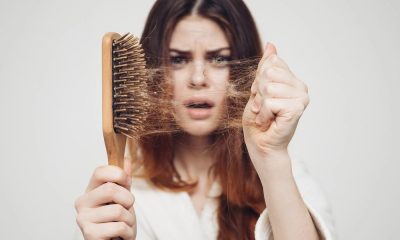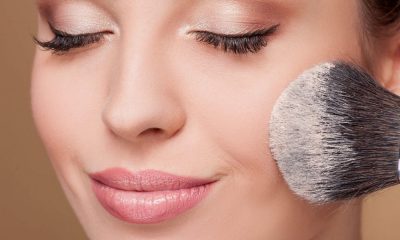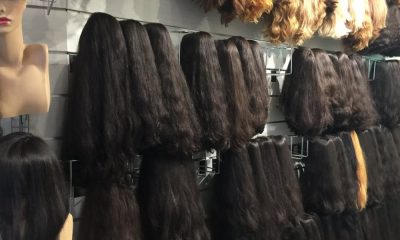Using a good concealer and knowing the right way to apply it, is key to achieving a flawless complexion. Concealers are used to counteract discolorations, lighten shadowed areas, disguise blemishes, scars and tattoos, and work in tandem with your foundation to achieve the appearance of an even skin tone. Concealer can improve your skin’s appearance dramatically, but only if it’s invisible. The wrong colour, consistency, or incorrect application will only draw more attention to the problem areas, making them look worse, not better!
The secret to concealing is applying the concealer just to the area of discoloured or scarred skin. As a rule of thumb your concealer should be one or two shades lighter than your skin. The exception is when you are covering blemishes, scars and tattoos, where you apply the concealer after the foundation, and thus will need a concealer that matches your skin tone exactly, so that it doesn’t stand out. Most people need a yellow-based, not pink-based concealer, because it flatters all skin types. The exception is dark or black skin, which looks better in orange-based concealers.
With so many different types available on the market it can all get quite confusing. This is why it is best to consult with a professional Makeup Artist who will be able to advise you on the best formula and colour for your specific skin concern. But to give you a helpful guide as to what you should be looking for, I will explain the different formulas available, and address some common concerns and how best to tackle them.
Formulations and Textures
Concealer comes in various formulas and textures. Different textures of concealers are used on different problem areas, so it’s important to know which product is best for your particular concern and skin type. For example, a concealer used to cover under-eye areas should always be moist and creamy, whereas a concealer designed to cover breakouts or broken capillaries should be much drier in texture so it will adhere better and last longer.
Solid cream stick concealers give a full coverage and are handy for those moments when you need to top up during the day, but they can be quite difficult to blend. They are used primarily for prominent blemishes and skin discoloration. They can be used for under-eye circles but make sure it’s creamy enough to blend so that it does not sit in and accentuate fine lines.
Pot concealer provides a similar coverage to stick, but is usually formulated with moisturising ingredients and is less thick, so it is better for under the eyes. This is the most commonly used by makeup artists because of the coverage it gives.
Tube concealer has a creamier texture, which is lighter and less likely to collect in fine lines, making it great for mature skins. It’s one of the most versatile forms of concealer as it can be mixed with foundation or moisturiser to create a much sheerer product. It’s one of the easiest to blend so ideal for under the eyes.
Wand concealers offer the lightest texture and are excellent for evenly out skin tones. They provide a slightly denser coverage than foundation and are quick to use. Some dry to a powder finish that’s great for covering facial blemishes because the powder clings and makes it more long lasting.
Pencil concealers cover tiny imperfections like broken capillaries, blemishes and other tiny flaws such as an uneven lip line.
Oil free compact formulations are best used on the face to hide pimples and spots. They are usually a longer-wearing, drier texture that won’t irritate breakouts. They are also good for covering age spots and hyper pigmentation.
Highlight reflecting products help to hide flaws but don’t actually cover. Instead they have light reflecting properties that refract light to help minimise shadowed areas like bags and wrinkles. Applied to the shadowed area they help to brighten and bring forward the area to make it less distinct. However they should be used sparingly.
Common Skin Concerns
Dark Circles
The skin around the eye is very thin and fragile. Just like an onionskin it is transparent and everything underneath is reflected above on to the skin. To cover under-eye discoloration (which is really blood vessels that appear blue or grey when they reflect light), you need to find the perfect texture and shade for you. A formula that is too moist will ‘travel,’ and slip into creases and fine lines. A formula that is too dry will not blend easily and will appear cakey on the delicate skin beneath. For mature skin, concealer is best applied delicately and sparingly on the fingertip.
Colour Wheel
Depending on your skin tone the dark circles will appear in many different tones. You need to choose the correct colour to counteract the colour of your dark circle. This is when you need to consult the colour wheel. Colours that are opposite each other will help to correct each other i.e. if your dark circles have a blue undertone then you need a peach based concealer to knock back the blue; if they have a more purple undertone then you will need a more yellower based concealer etc.
A great tip for identifying under-eye shadows is to tilt your head down, then look up and straight on into the mirror. This will guide you as to wear to apply the concealer.
Before applying concealer always prep the skin first by applying an eye cream and letting it soak in for 2-3 minutes, before blotting any excess with a tissue. The skin under the eye tends to be dry, so moisturising the area will prevent your concealer from caking.
Then take a brush and apply concealer along the line of demarcation – where the discolouration begins on your skin. Extend the concealer up and over the demarcation area with the brush and then using your finger softly pat the concealer along the long of demarcation to blend it in. Remember less is more. Be sure to also conceal any darkness in the corners of your eyes and eyelids if necessary. When applying your foundation be careful not to wipe away the concealer underneath. Stipple or pat the foundation on over the concealed area and then blend out.
When covering under-eye puffiness, apply concealer to your dark circles first. Then apply your foundation, before stippling on a lighter concealer just underneath the puffiness. By highlighting the shadowy area underneath, you will bring it out and make the puffiness recede.
Skin Imperfections
Blemishes
To minimise facial blemishes, you will need a dry-textured concealer so that it will cling better to the skin. Apply your foundation first and then using a concealer that matches your skin exactly, apply the concealer directly to the blemish with a small pointy brush. Then sweep the brush around the base to blend the edges into the skin. Don’t use your fingers, as you will transfer bacteria on to your skin.
Broken Capillaries or Veins
It is important to apply the concealer only to the areas of discoloration. Take a brush and draw a zig zag line of concealer on top of the broken capillary or vein. This will help it to look more real rather than painting on a straight line. Then stipple out the edges to blend.
Rosacea
To counteract the redness you should always use a yellow-based concealer and apply it only to the reddened areas. Then stipple the outer edges with your fingertips and gently blend into the skin. Stipple foundation over the top to achieve a flawless finish.
Hyperpigmentation or Melasma
To correct age spots or brown spots, apply concealer only to the areas of discolouration. Otherwise if you apply concealer beyond the line of demarcation, you will lighten the skin that is already the correct colour. After applying stipple the edges to blend and finish by stippling foundation on top. Ivory and beige skin tones should use a yellowy concealer. For darker skin tones an orange-based concealer works best.
Scars
A scar is a raised area of skin with no pores, this makes it hard to conceal, as pores are what makeup clings to. This is when specialist skin camouflage creams are ideal and where it helps to see a specialist Skin Camouflage practitioner so that you can be advised on what products will be best suited to your skin concern. If you don’t have a concealer specifically suited to scars, try this trick. Apply moisturiser to the area, followed by a bit of loose powder. The moisturiser gives the powder something to cling on to. Then using a brush, apply a concealer to the scar and blend the edges. The concealer and the powder will mix together to form a drier textured concealer that will stick.
For acne scars where there is variation of texture, keep it as matte as possible and powder to make the skin look perfectly flawless.
There are so many great concealers on the market it can be quite confusing for a novice so it’s best to consult with a specialist who will be able to advise you on what colour and formulation is best.
Charlotte Trendell

 Entertainment52 years ago
Entertainment52 years ago
 Fitness & Sports52 years ago
Fitness & Sports52 years ago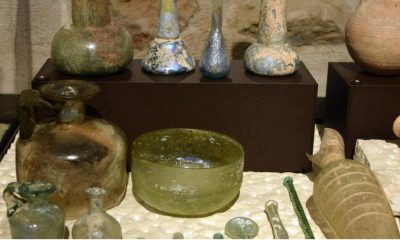
 Articles52 years ago
Articles52 years ago
 Entertainment52 years ago
Entertainment52 years ago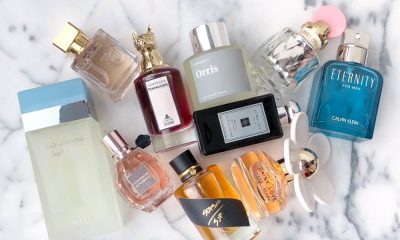
 Beauty52 years ago
Beauty52 years ago
 Fitness & Sports52 years ago
Fitness & Sports52 years ago
 Food52 years ago
Food52 years ago
 Travel52 years ago
Travel52 years ago






